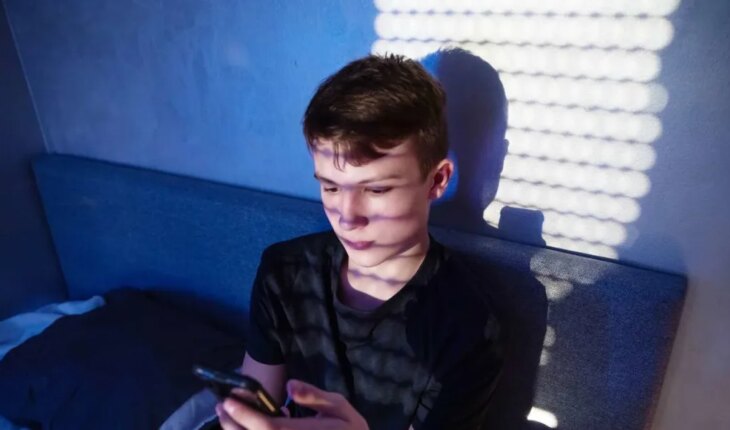News broke that new features will be implemented that will allow users to set some additional features to protect their experience browsing the Internet and using their search engine to find necessary information. Parents are clear on these and a thousand other occasions that they are responsible for taking care of their children. This protection measure can work very well, but there are a number of other things that can be done to defend them from cybercrime and harassment.”For starters, we ourselves have to be more careful with what we post on our social networks. When we publish a photo or video of our child we are exposing their privacy without thinking about the impact that all that personal information will have in the future.“, explains Pablo Lima, Sales Director of the Southern Cone of VU, a global company specialized in identity protection and fraud prevention. In fact, UNICEF stresses the need to protect children’s privacy and identity online. “No child shall be subjected to arbitrary or unlawful interference with his or her privacy, family, home or correspondence or to unlawful attacks on his or her honour and reputation. The child has the right to protection of the law against such interference or attacks“, states Article 16 of the United Nations Convention on the Rights of the Child.The phenomenon of exposing children’s private information on the Internet is called “sharenting”, which derives from the English words sharing and parenting. There is also “oversharing”, in cases where we find that there is an overexposure of minors. At least 42% of children who have been “ridiculed” online may feel embarrassed by posts in which they became protagonists without having provided their consent, according to a survey conducted by Microsoft.It is important then in case you want to upload photos of the children to the Internet, try to have private accounts and extreme care with who are the people who can have access to that controlled and closed group, in addition to blocking the possibility that our contacts share these publications.” says Lima. How to protect children from cyberbullyingConsidering the protection that must be done from the mother’s and father’s own hands, there is also always the possibility that children who already have access to networks and the Internet will suffer cyberbullying.”Cyberbullying includes tactics such as posting malicious comments (including text messages), spreading rumors, making threats, inciting suicide, impersonating someone else by using a fake account, and creating a social media account to harass someone.Types of crimes Grooming: a crime in which an adult pretends to be a young person to deceive him, from which a bond of trust and empathy is established to obtain information, personal data, photos or videos that are then used for extortion or harassment. These conversations can last even weeks or months and often begin in online rooms such as games. This relationship can be transferred to a face-to-face encounter with an outcome that can be very traumatic for the child and his environment. If there is evidence of extortion, there are already legal mechanisms within the websites and platforms to channel complaints, so it is recommended not to delete chats or any evidentiary element. Cyberbullying: consists of sharing content that may be embarrassing for another child. Some examples of cyberbullying are: dissemination of photos; account hacking to impersonate; harassment with unwanted messages or communication attempts; threatens sensitive material that could ridicule the victim; discrimination; massive separation of networks, games or Whatsapp for no apparent reason. Many times the impact of cyberbullying is minimized by the idea that there is no physical threat: the bully is not there and the kids could simply avoid entering the network. However, experts agree that young people still feel the real impact when photographs and online rumors about them spread at their school, for example.”Although there has been a shift in mindset as to how to address cyberbullying and some states have enacted stricter legislation, it is still a widespread problem and approaches to combating it vary. Schools are increasingly dealing with bullying with a conflict resolution approach” says Lima. And what can you do as parents? More than half of boys, according to international studies, do not talk about bullying. That’s why be vigilant if they seem sad or angry when they’re online; if there is a sudden increase or decrease in their time on the Internet; if they become withdrawn or anxious or change windows or turn off the computer when the parent approaches. Monitor online activityRegularly review kids’ online activity and privacy settings for their social media accounts. There are five guidelines that should not be lost sight of when accompanying children during their online journey. That is why it is essential to talk with them about the importance of:- Do not share personal data (real name, place of residence, age, educational establishment, schedules, extracurricular activities, etc).- Do not share photos of any kind.- Do not expose passwords by any means.- Enable multiple authentication factors on all sites, applications and games.- Warn about the possible dangers that may have some carelessness. Act from our knowledge as adults – Trust and reflection: it is necessary to establish a bond of trust with children so that they feel an environment of openness in which they receive the recommendations and that they feel able to tell what they do or what may be happening to a couple. This includes avoiding embarrassment when it comes to showing the cell phone to adults you trust. – Device security: disable location tracking of all applications and sites.- Review of data protection policies: it is important that adults review data protection policies and adjust the privacy settings of the applications and platforms that children use and update them frequently.- Knowledge: It is essential to know what applications, games and sites they browse, what information they request and what features they have (chat, images, voice or video communication). This even requires the identification of the logos and isotypes of the applications. All these measures can help protect children, who along with older adults, are the most vulnerable in the field of cybercrime.
Children: the most vulnerable link in cyberbullying
February 22, 2023 |





